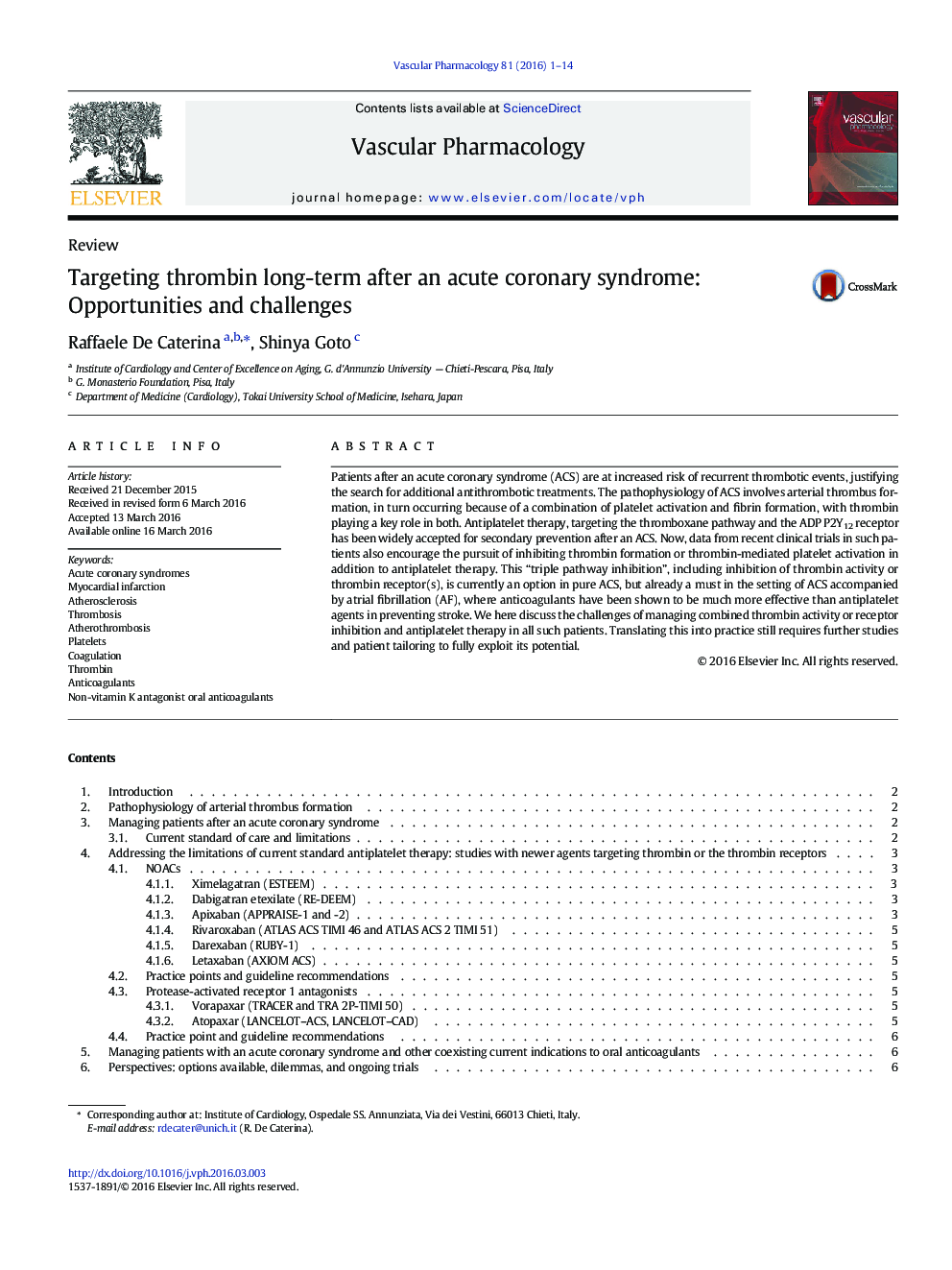| کد مقاله | کد نشریه | سال انتشار | مقاله انگلیسی | نسخه تمام متن |
|---|---|---|---|---|
| 2573924 | 1561237 | 2016 | 14 صفحه PDF | دانلود رایگان |
Patients after an acute coronary syndrome (ACS) are at increased risk of recurrent thrombotic events, justifying the search for additional antithrombotic treatments. The pathophysiology of ACS involves arterial thrombus formation, in turn occurring because of a combination of platelet activation and fibrin formation, with thrombin playing a key role in both. Antiplatelet therapy, targeting the thromboxane pathway and the ADP P2Y12 receptor has been widely accepted for secondary prevention after an ACS. Now, data from recent clinical trials in such patients also encourage the pursuit of inhibiting thrombin formation or thrombin-mediated platelet activation in addition to antiplatelet therapy. This “triple pathway inhibition”, including inhibition of thrombin activity or thrombin receptor(s), is currently an option in pure ACS, but already a must in the setting of ACS accompanied by atrial fibrillation (AF), where anticoagulants have been shown to be much more effective than antiplatelet agents in preventing stroke. We here discuss the challenges of managing combined thrombin activity or receptor inhibition and antiplatelet therapy in all such patients. Translating this into practice still requires further studies and patient tailoring to fully exploit its potential.
Figure optionsDownload high-quality image (203 K)Download as PowerPoint slide
Journal: Vascular Pharmacology - Volume 81, June 2016, Pages 1–14
